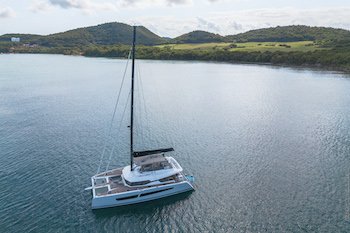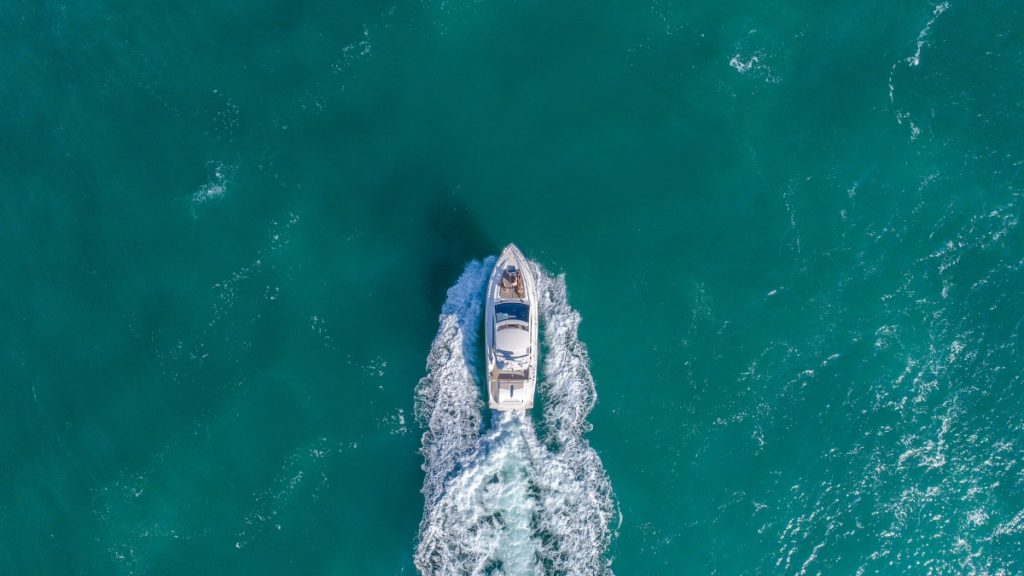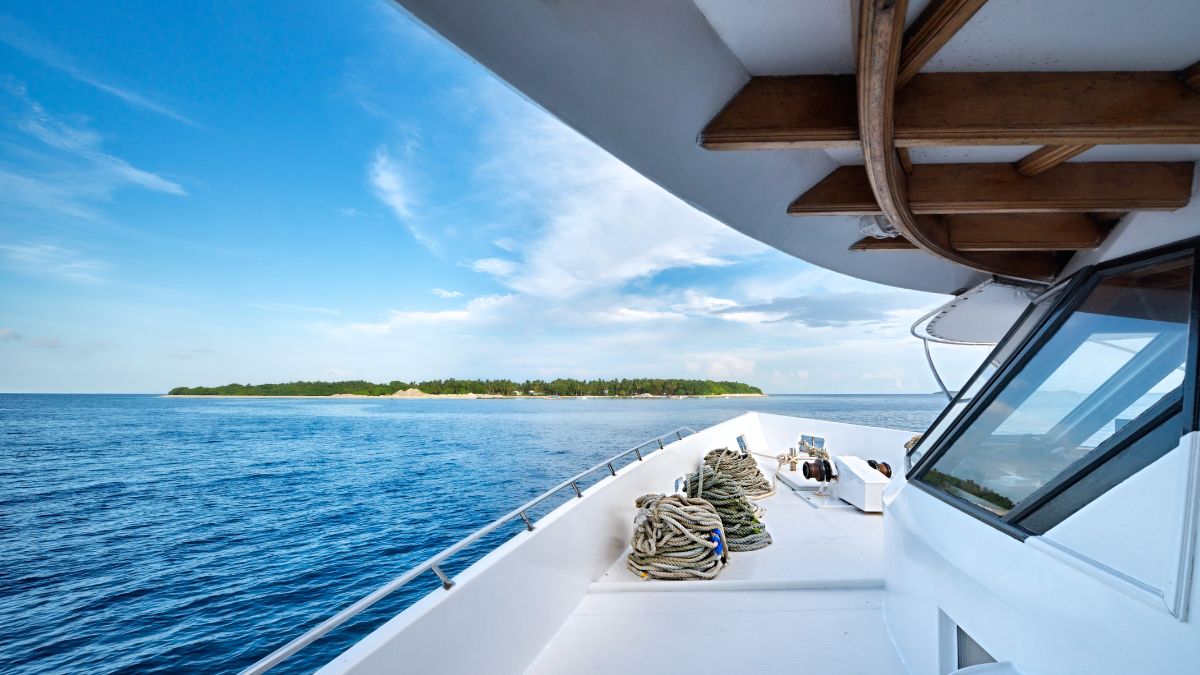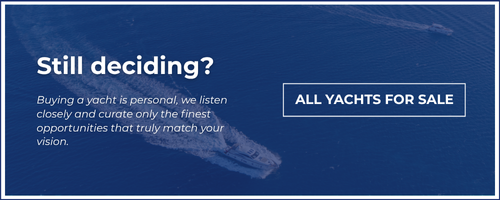Buying a yacht, whether new or second-hand, is rarely about investment returns. For most people, it’s a lifestyle choice, a way to spend time on the water and enjoy a different pace of life. But before you commit to a purchase, it’s worth taking a step back and considering a few practical aspects that come with owning a boat.
Summary of pros and cons of new vs 2nd hand yacht purchase
| Factor | New Yacht | 2nd hand yacht |
| Purchase price | Expensive | Affordable |
| Initial depreciation | For you | For the previous owners |
| Technology | New or recent | Depends |
| Warranty | Under warranty for most equipment | Usually no warranty valid |
| Reliability | Unknown | Depending on track record |
| Customisability | High | Low |
| Trust you can have in the owner | Quite high | Very low |
| Financing | Easier to get a loan | Harder to get a loan |
Buying a yacht, new or 2nd hand is almost always a “pleasure” purchase and not an investment


For most people, buying a yacht isn’t about making money. It’s not the kind of asset you buy hoping it will go up in value over time. In fact, quite the opposite tends to happen.
When someone buys a yacht, it’s usually because they’re looking for a certain kind of experience. Time on the water. Freedom to explore. A personal space away from the routine. It’s more about lifestyle than profit.
Of course, that doesn’t mean it’s a decision to take lightly. A yacht still represents a significant financial commitment, and there are real costs involved—both upfront and ongoing. But the motivation behind the purchase is usually emotional rather than financial. It’s not about returns, it’s about enjoyment.
Understanding that from the beginning helps set the right expectations. You’re not buying a yacht to make money. You’re buying it to make time. Time with friends, with family, or maybe just with the sea. That shift in mindset changes how you approach the whole process.
Key factors to keep in mind before purchasing a yacht, whether it’s new or 2nd hand

Buying a yacht isn’t just about choosing the right model or getting a good price. It also means being clear-eyed about what ownership actually involves—financially, practically, and even emotionally.
A yacht is quite expensive to own and maintain
The initial purchase is only part of the expense. Once the yacht is yours, the real costs begin: mooring fees, insurance, regular maintenance, fuel, cleaning, and annual servicing all come into play. Then there are the unexpected costs—equipment failures, haul-outs, replacing worn parts, or fixing issues after a rough passage. It adds up, even if the boat stays in port more often than not. If you’re not prepared for this, the experience can quickly go from exciting to stressful.
Yachts depreciate in value… fast
Most yachts lose value the moment they’re purchased. This is especially true for new builds, where the first few years bring the steepest drop. It’s not like real estate or certain cars that might hold their value for a while. A yacht is more like a luxury item—the moment it’s used, it’s worth less. If you plan to sell it down the line, you should expect to do so at a loss. That’s part of the deal.
A yacht can sink, burn or get damaged to extreme points
Yachting isn’t without risks. Boats can sink due to hull damage or through-hull fittings failing. Fires can break out onboard due to faulty wiring or engine issues. Groundings, collisions, violent storms—it’s all part of life at sea. You can reduce the risk through good seamanship and maintenance, but you can’t eliminate it. When things go wrong, they tend to go wrong in a big way, and repairs are rarely cheap.
Some new boats deteriorate fast, some old boats last forever
New doesn’t always mean better. Some modern yachts are built with cost-cutting in mind—lighter materials, faster production, less attention to detail. They might look great at launch, but five years in, signs of wear show up early. On the flip side, many older yachts were built with heavier materials and more craftsmanship. If they’ve been maintained properly, they can outlast a newer boat by decades. Age isn’t the only indicator of quality—build standards and maintenance history often matter more.
Read also: Should your yacht be in an LLC?
The pros and cons of buying a new yacht

There’s something appealing about buying a brand-new yacht. No history, no surprises, and everything exactly how you want it. But like most things, there are trade-offs.
The Pros of buying a new yacht

The yacht should be in perfect condition
A new yacht comes straight from the shipyard. Everything is unused, clean, and—at least in theory—working exactly as it should. There’s a certain peace of mind in knowing no one else has put miles on the engine or hidden problems below deck.
You can somewhat trust the seller of a new yacht (usually a shipyard)
Dealing with a shipyard or an authorised dealer brings a level of professionalism. You’re not buying from a private owner with unknown habits or motives. There’s a process, paperwork, and usually a reputation to protect on their end.
The technology is usually up to modern standards
New yachts often come equipped with the latest navigation systems, electronics, energy solutions, and safety gear. You don’t have to worry about updating outdated systems or retrofitting essential equipment right after buying.
Some sort of warranty guarantee to limit the costs of repairs for a while
Most new yachts come with warranties—covering the hull, equipment, and onboard systems for a certain period. It doesn’t eliminate all costs, but it can offer a buffer during the first couple of years.
You can customise your yacht up to your tastes and standards
If you’re ordering directly from the builder, you often have a say in the layout, finishes, equipment, and even structural elements. This level of customisation can make the yacht feel more personal and better suited to how you plan to use it.
It’s easier to get a loan to finance a brand-new yacht
Banks tend to prefer financing new boats. There’s more security for them in a clean, documented asset, and the process is usually more straightforward than with a second-hand vessel.
The Cons of a new yacht

A new yacht, especially custom-made ones, are always expensive
There’s no way around it—new yachts cost more. Whether it’s a production model or a fully custom design, the price tag reflects the materials, the labour, and the build process. And with customisation, the costs can climb quickly.
The depreciation of your new yacht will be very fast
As soon as the yacht is delivered, it starts to lose value. In just the first year, the drop can be significant. If you plan to sell it within a few years, you’ll almost certainly be taking a financial hit.
A new yacht can take months and even years to be delivered after you order it
If you’re ordering a new build, especially with custom specs, delivery times can stretch out. Some waits last over a year, depending on the builder’s schedule, availability of materials, and the complexity of the project. If you’re hoping to get on the water quickly, this can be a real limitation.
Read also: Power or Sail Catamaran – What’s Right for You?
Pros and cons of a 2nd hand yacht

A second-hand yacht can be a smart option—especially if you’re looking to avoid the steep costs of a brand-new build. But as with anything pre-owned, it comes with its own set of considerations.
The Pros of a second hand yacht

You are buying the yacht post initial depreciation, so much cheaper
One of the biggest advantages is price. The first owner has already taken the biggest hit in terms of depreciation. Depending on the age and condition, you can often find yachts that are significantly cheaper than new models—even if they’re only a few years old.
You own your yacht straight away after you’ve purchased it
Unlike a new build, where you might wait months or even longer for delivery, a second-hand yacht is ready when you are. Once the paperwork is sorted, it’s yours. That means you can get on the water quickly and start enjoying the boat immediately.
The previous owner may have upgraded the yacht to include nice equipment
Some owners invest heavily in upgrades—solar panels, navigation systems, safety gear, comfort improvements. In many cases, you’re getting a better-equipped yacht than the original factory version, without paying the full price of those additions.
You have history of the yacht, its issues and past performances
If the yacht has been well cared for, it should come with maintenance records, refit details, and survey reports. This kind of background helps you understand what you’re buying—what’s been done, what might need attention, and how the boat has been used.
It’s hard to finance a second-hand yacht with a loan
This is technically a con, but it also has an upside for some buyers. Because banks are less likely to finance older boats, second-hand yachts are often bought outright. That means no loan interest, no monthly payments, and full ownership from day one. For many, that’s a simpler and more flexible way to buy.
Access to Certified Reconditioned Programs Like Lagoon NEO
One of the significant advantages of buying a used boat today is the availability of high-quality reconditioning programs such as the Lagoon NEO initiative. Developed by Lagoon Shipyard, this program offers a premium alternative to traditional second-hand purchases by selecting pre-owned Lagoon catamarans and restoring them to the highest technical and aesthetic standards. Each boat undergoes a complete structural audit, receives modern upgrades (like lithium batteries, solar panels, and connected systems), and comes with a 2-year manufacturer’s warranty. With several levels of refit available—from basic interior refreshes to full hull renovations—the Lagoon NEO boats are delivered turnkey and ready to sail. This program not only offers the safety, reliability, and support usually reserved for new boats, but also aligns with sustainable practices by extending the life of existing vessels. It’s an ideal option for buyers seeking peace of mind without the premium price tag of a brand-new model.
The Cons of a second hand yacht

You can’t really trust the previous owner and need to inspect the yacht professionally
Even if the seller seems honest, you’re still relying on their word—and maybe some incomplete maintenance records. That’s why a thorough, independent survey is essential before buying. It’s the only way to really understand the yacht’s condition, spot hidden issues, and avoid surprises later on.
You can’t customise the yacht to your taste
With a second-hand yacht, what you see is mostly what you get. The layout, finishes, and equipment reflect someone else’s choices. You can always refit or modify things, but that takes time, effort, and money. And depending on the design, some changes might not even be possible.
Equipment of a second-hand yacht might deteriorate faster
Older gear—engines, sails, electronics—tends to wear out. Even if everything is working now, you might be looking at replacements sooner than you would on a new boat. This doesn’t mean the yacht is in bad shape, just that some components may be closer to the end of their useful life.
Most second-hand yachts have no warranty on their equipment
Once you take ownership, you’re responsible for anything that breaks. Unlike a new yacht that often comes with a warranty period, second-hand boats are typically sold “as is.” If something fails a month after you buy it, the cost is yours to cover.
Read also: The 10 Biggest Catamarans For Charter Worldwide
Unsure about your next purchase ? Get a 2nd opinion with our professional brokerage assistance


Choosing between a new or second-hand yacht isn’t always straightforward. Budget, timing, intended use, and long-term plans all play a role. If you’re hesitating or want an outside view, we’re here to help. Our brokerage team offers impartial advice and on-the-ground experience to guide you through the process—whether you’re buying your first yacht or looking to upgrade.
Read also: Buy or Rent a Yacht: Find the Perfect Option for Your Lifestyle and Dreams





